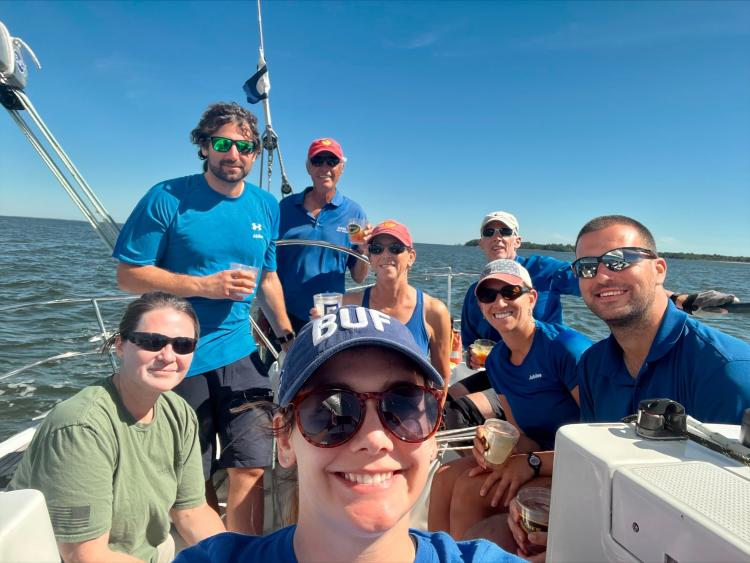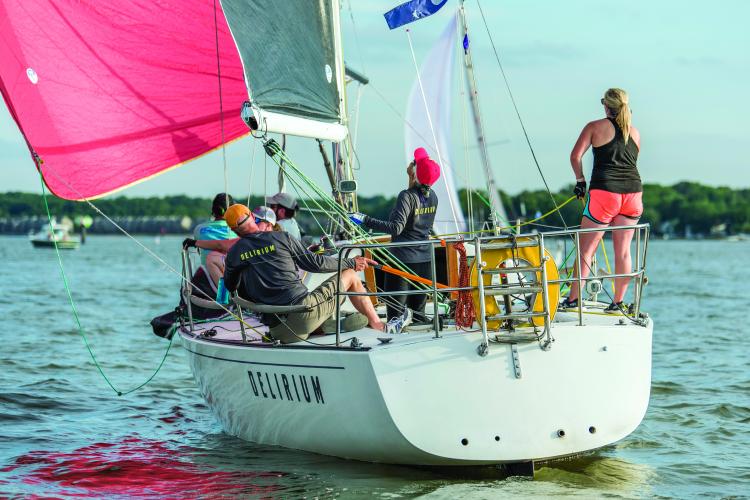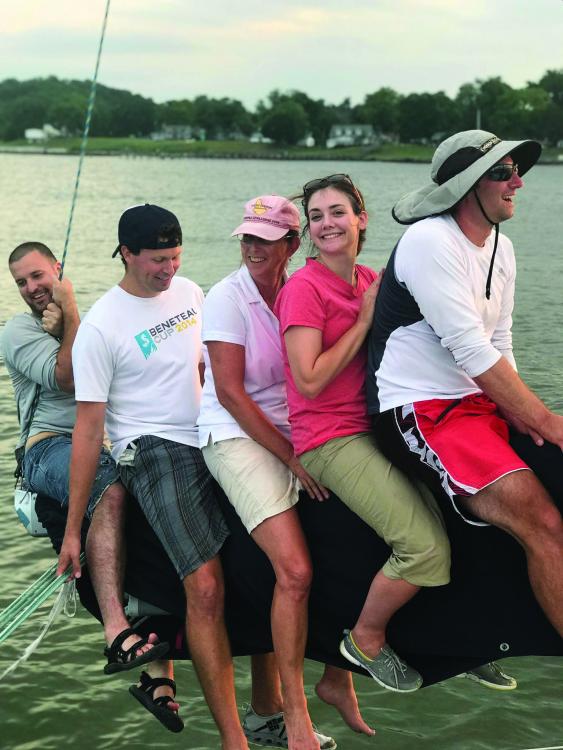Finding, Training, and Keeping Racing Crew… It’s Complicated!
The reality is that there are not enough good racing crew to go around. The trend over the past 10 years or so has been towards smaller boats with fewer crew, and more recently we have witnessed the emergence of shorthanded sailing as a serious and well-supported group. For fully crewed boats, large and small, the challenge of finding and retaining good crew persists …

Finding Crew
I think it all boils down to expectations. What are your goals when you leave the dock? Irrespective of what kind of boat you have: Do you want to finish on the podium or win every time you go out? Is your goal to finish in the top half of the fleet? Or do you and a bunch of good friends break up the work week by getting out on a Wednesday to enjoy whatever nature has to offer that day, and drink a couple of beers or Mount Gay beverages?
It is terribly important to understand that unless you are singlehanding a boat, this is a team sport and demeanor plays a huge role in the outcome for both skipper and crew.
If you are a skipper in the first group, you most likely don’t have a lot of trouble finding crew. Annapolis racing sailors Mike Beasley and Rod Jabin, for example, always have enough crew, and they are really good sailors! The challenge for many other skippers in this group, however, is finding enough good, capable, and reliable crew to get the boat around the race course without making mistakes or breaking stuff.
On this kind of boat there is sometimes a disconnect between the goals and expectations of the skipper and the ability of the crew. This can lead to frustration for the skipper and frustration for the crew. Crew don’t want to be yelled at and/or blamed for not winning. And guess what? Many crew will choose not to go back to that boat. It’s a vicious cycle of trying to find crew with the skills and demeanor to fit in vs. the skipper with a challenging demeanor who finds it difficult to modify behavior and be less demanding and abrasive.

For boats in the second group (aim to finish in the top half), you most likely sail with less than the maximum allowed (by your class or rating certificate), and you are fine with that. Maybe you cleaned the bottom before the race, but your boat is in good shape and you carry plenty of snacks and beverages. You are serious about racing but not to the extent that you yell a lot, and you check to make sure that the crew are enjoying their time on the water with you. The challenge for skippers in this group is that it is hard to attract the type of crew who are capable, competitive, and really want to win. Or you take on novice crew and train them, only to have some of them looking around to see if they can get on more competitive boats. Maybe they stay with you until the end of the season, and they find another opportunity with someone else next year.
Skippers in the third group (social beer can sailors) usually have no trouble finding enough crew to get around the course—no one is too worried about being in the second row at the start, or being on the outside of a shift, or messing up a gybe. You all enjoy the company, the good vibes, and being out on the water. Every now and then you get a good start, you are lucky enough to get in phase with the wind shifts, and you might even get the gun. Excellent, and certainly worth another dark ‘n stormy for all!
Training Crew
For many skippers training crew is tough. The best trainers are those who can do every position on the boat, not just the mechanics involved in a particular job, but also the interdependencies of the various jobs: Mast and bow working seamlessly to pull off a gybe or a takedown, pit and mast coordinating a hoist and douse, spin trimmer and guy trimmer keeping the chute perfectly set, helm and mainsheet trimmer working together to keep the boat balanced and fast. If the skipper is not proficient in all positions on the boat and is having trouble training crew to work seamlessly together, getting a pro onboard for some training sessions may be a good investment of money and time.

Crew who know what they are doing and are working collaboratively are invariably enjoying their time together. Competitive sailing is a team sport. If the skipper and crew are doing their jobs well, it is quite likely that they will all be having fun. Very few crew are paid professionals, so they had better be having fun! Right?
Keeping Crew
Crew will keep coming back for different reasons, depending on their goals and aspirations: good chemistry, friendship, a shared sense of achievement, a sense of belonging, feeling appreciated, getting a good result, and seeing opportunities to learn and grow. All sorts of emotions are involved, and for the skippers who recognize the individual needs of each crew and find ways to accommodate them, the reward will be a long-term commitment from loyal crew.
Some skippers provide all the food and refreshments, some skippers ask crew to bring their own, and others have crew get provisions on a rotating basis. Some boats are “dry,” and there is one bottle of water and a sandwich for each crew member. There is no right way to do it, so long as everyone understands the plan and accepts that.
One big piece of advice for skippers: Hire Well, and Fire Well.
Sometimes you have to ask someone not to come back, or you have to stop inviting them. Why? Because every now and then there will be a person on your boat who is not getting along and is negatively affecting the good chemistry and enjoyment for the majority. No matter how good a sailor that “bad apple” is, in the interests of maintaining harmony and restoring the fun factor, the best course is to get that person off your boat.
The three essential elements for keeping good crew:
1. Respect for each person on the boat.
2. Setting reasonable goals and having a plan to achieve them that everyone understands with roles and responsibilities well defined.
3. Giving everyone an opportunity to contribute and grow, based on a sensible balance between your expectations and their abilities; setting people up for success, not failure.
Above all, skippers should understand their own limitations and weaknesses, and be open to asking for advice or coaching to fill in the gaps. Beware the skipper who thinks he knows everything and doesn’t welcome input or others’ opinions.
About the Author: Keith Mayes, his wife Emily Manders, and their team have been successfully racing the Beneteau 36.7 Jubilee out of Herrington Harbour for more than a decade.




